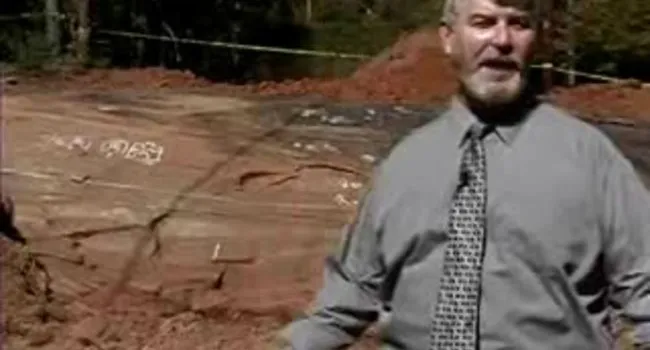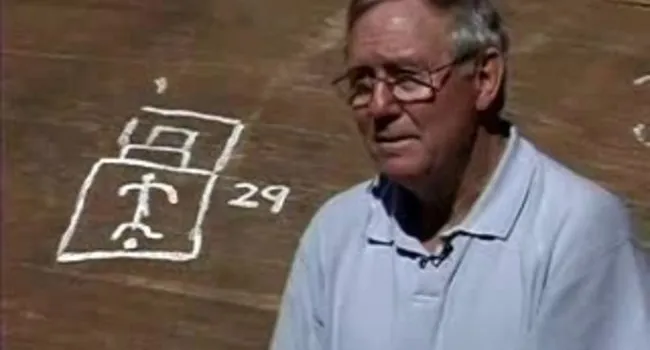Hundreds, possibly thousands, of years of weathering and erosion rendered the Hagood Mill site petroglyphs invisible to the naked eye. Amateur archaeologist Mike Bramlett discovered several of the "stick figure" petroglyphs on a rainy winter day in January, 2003. Wetting increases contrast in colors and markings on stone surfaces, and the rainy weather revealed images impossible to see on a sunny day.
After the discovery, archaeologists found more petroglyphs under several feet of sediment covering part of the outcrop. Volunteers carefully removed the dirt with earth movers, shovels and brushes. After excavation, a team of archaeologists and a photographer documented the petroglyphs at night using cameras and special lights. Later, an artist applied talcum powder to the images so that others could view them in daylight.
Without proper protection from vandalism and the elements, the petroglyph site eventually had to be covered with plastic sheeting and dirt fill. The Pickens County Historical Museum is currently raising funds to build a rock art center around a display of the petroglyphs.



